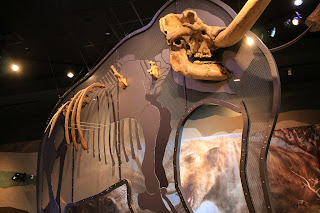Spillover: Animal Infections and the Next Human Pandemic, by David Quammen (2012): another excellent nonfiction published in the decade before the COVID pandemic, and which should have been an eye-opener to governments. (Others in this category are Pandemic: Tracking Contagions, from Cholera to Ebola and Beyond, by Sonia Shah [2016] and Epidemics and Society: From the Black Death to the Present, by Frank M. Snowden III [2019].)
First off, Quammen is an excellent writer. His writing reads like lyrical prose even when the subject matter is deadly. He writes for National Geographic and has published a number of science books, especially looking at evolution and ecology. Particular quotes I love are:
“Pondering [zoonoses] tends to reaffirm the old Darwinian truth (the darkest of his truths, well known and persistently forgotten) that humanity is a kind of animal, inextricably connected with other animals: in origin and in descent, in sickness and in health.”
“Infectious disease is a kind of natural mortar binding one creature to another, one species to another, within the elaborate biophysical edifices we call ecosystems.”
“Every spillover is like a sweepstakes ticket, bought by the pathogen, for the prize of a new and more grandiose existence.”
Quammen is talented at explaining complex science understandably, as in this analogy of the structure of the influenza virus: “a single-stranded RNA genome, which is partitioned into eight segments, which serve as templates for eleven different proteins. In other words, they have eight discrete stretches of RNA coding, linked together like eight railroad cars, with eleven different deliverable cargoes.” Reassortment happens because “the segmentation allows their RNA to snap apart neatly at the points of demarcation between genes: those eight railroad cars in a switching yard.”
The book looks at various zoonoses (infections that can spread from animals to humans), which includes most of the nasty diseases you’ve heard of (rabies, Black Plague, COVID, Ebola, avian and swine flu, HIV, West Nile) and plenty of other nasties you might not have heard of (Nipah, Hendra, Marburg). Basically the only major pandemic-level infections (and bioterrorism threats) that aren’t zoonotic are smallpox and polio. Incidentally, smallpox and polio are the only diseases we’ve been able to eradicate, and that is specifically because they infect humans only, with no animal reservoir.
Zoonoses are pathogens that happily circulate in a reservoir host, not causing much illness or death, just replicating and spreading. The problem comes when that pathogen makes a jump to another species. If the pathogen evolves to spread within the new species, you’ve got a new infection. As an example, Nipah virus was traced to a certain fruit bat. The virus and the bat get along fine, happily living and reproducing together. The problem is when the bat drools on fruit or tree sap and then that bat saliva gets into a pig or a human. Pigs and humans experience severe symptoms and death, and can spread it to others of their species, leading to epidemic/epizootic potential.
Diseases that are covered in detail in the book are Hendra, Ebola, malaria, SARS, Q fever, Lyme, herpes B, Nipah, Marburg, HIV, and influenza. Along the way we meet interesting people like biologist Mike Fay walking 2,000 miles across central Africa on a Megatransect to identify every species encountered; Mr. Wei, a Chinese gentleman farming giant bamboo rats for food; scientists Lisa and Gregory Engel trapping monkeys at a Bangladeshi shrine; veterinarian Jon Epstein swabbing bats; Michelle Barnes, a tourist who survived an unrecognized Marburg infection from a bat cave; and a nameless seller in a food market, offering tasty smoked monkeys for 6,000 francs.
As a veterinarian and public health nerd, I especially found the section on malaria fascinating. Generally speaking, malaria is considered a human infection: the malaria parasite is spread from one person’s bloodstream to another person’s bloodstream via mosquito bites. But as Quammen points out, “everything comes from somewhere.” Malaria may be a human infection now, spread human-to-human, but where did it come from initially? Turns out, it came from animals. There are four major malaria strains and DNA research has found they actually came from four different animal spillovers. A fifth malaria strain may be in the process of currently evolving from animals to humans. As he writes, “The distinction between zoonotic diseases and nonzoonotic diseases is slightly artificial, involving a dimension of time. By a strict definition, zoonotic pathogens are those that presently and repeatedly pass between humans and other animals, whereas the other group of infections are caused by pathogens descended from forms that must have made the leap to human ancestors sometimes in the past.”
Another interesting section traces the evolution of HIV (human immunodeficiency virus) from SIVcpz (the specific strain of simian immunodeficiency virus in chimpanzees). Long story short: a human in southeastern Cameroon, probably a hunter cutting up a carcass, got SIV virus into his bloodstream from a chimpanzee, around the year 1908. Over the next couple decades, SIV circulated quietly in the local human population, causing just barely enough new infections to keep the virus going, slowly evolving to HIV, slowly traveling to what was then Leopoldville in the Belgian Congo and is now Kinshasa in the Democratic Republic of Congo. It started to spread much more rapidly in the 1930’s-50’s via well-meaning but inadvertent blood-to-blood contact in the form of reused needles/syringes in medical clinics treating trypanosomiasis and syphilis. In 1960, Belgian colonizers were kicked out of the Congo and Haitians filled a labor shortage, then one of those Haitians returned home carrying HIV. In Haiti, HIV spread through the 1960’s-70’s, again by inadvertent blood-to-blood contact in a medical setting, that of plasma donations. HIV traveled from Haiti to Miami, either in a human or in a plasma bag, around 1969 and then onward around the globe.
The final chapter is called It Depends, referring to the Next Big One. Of course, we’re in the Next Big One now, and some of this chapter is prescient. Quoting epidemiologist Donald Burke in 1997 (pre-SARS): “’Some of these viruses,’ he warned, citing coronaviruses in particular, ‘should be considered as serious threats to human health.’” And quoting mathematical ecologist Greg Dwyer: “’Any tiny little thing that people do,’ Dwyer said, if it makes them different from one another, from the idealized standard of herd behavior, ‘is going to reduce infection rates.’” Quammen writes, “An individual human may choose not to drink the palm sap, not to eat the chimpanzee, not to pen the pig beneath the mango trees, not to clear the horse’s windpipe with his bare hand, not to have unprotected sex with a prostitute, not to share the needle in a shooting gallery, not to cough without covering her mouth, not to board a plane while feeling ill, or not to coop his chickens with his ducks.” I would add to that: a human may choose to socially distance, to wear a mask, and to get vaccinated. Please do.

































